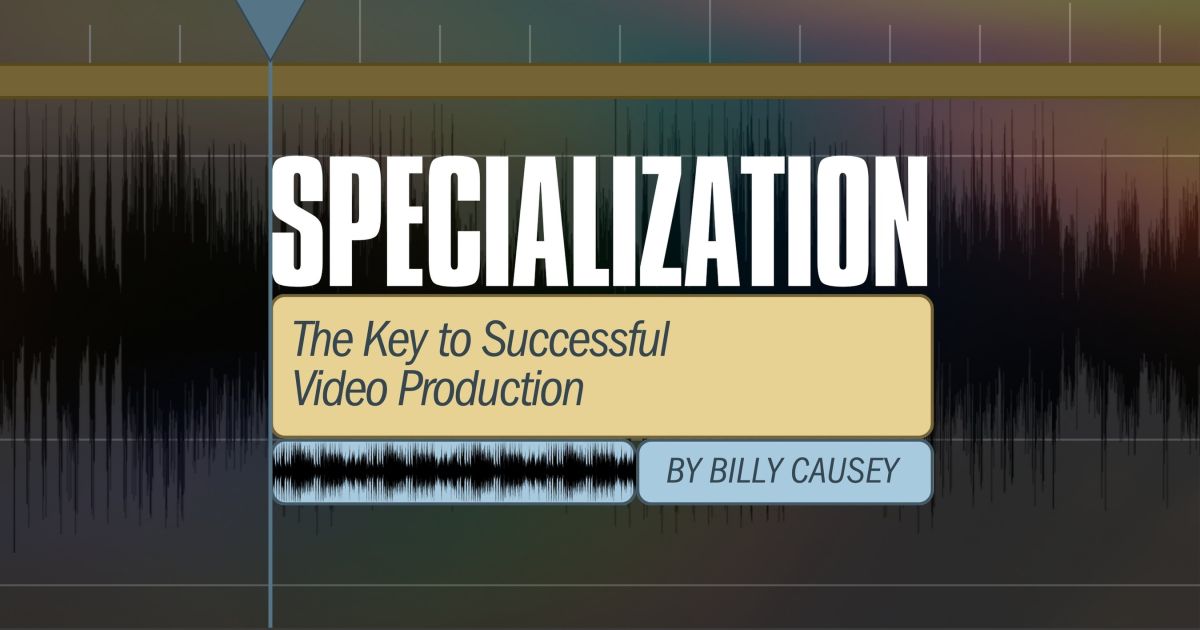In video production, the line between production, post-production, and design is not merely procedural but critical to creating impactful content. As ad agencies navigate the complexities of delivering high-quality video on aggressive timelines, the traditional model of multi-role expertise is proving to be a bottleneck. This blog explores each distinct discipline required for video production and argues for a specialized approach to each, underscoring the limitations of a one-size-fits-all mentality in an industry where detail, precision, and creativity are paramount.
Video Production: The Art of Capturing Content
Production is the stage where the raw material of any video content is created. This phase encompasses everything from concept development and storyboarding to shooting and sound recording. Each aspect requires a unique skill set:
-
Cinematography: Understanding lighting, framing, and camera technology to capture the visual essence of the project.
-
Sound recording: Capturing clear, high-quality audio that aligns with the visual content.
-
Directing: Guiding the talent and crew to realize the vision of the script.
Specializing in these areas ensures that the foundation of the video is solid, with high-quality raw footage that fully realizes the project's creative intent.
Post-Production: The Science and Art of Refinement
Post-production is where captured content is transformed into the final product through editing, color grading, sound design, and visual effects. This phase dramatically affects the video's impact and quality, and includes:
-
Editing: Constructing the narrative flow, pacing, and rhythm of the video.
-
Color grading: Enhancing and correcting the footage to create a visually cohesive and stylistic look.
-
Sound design: Crafting the audio landscape to complement the visual narrative, including effects, music, and dialogue editing.
-
Visual effects and motion graphics: Adding visual elements that enhance or create the visual storytelling components not captured during production.
Each post-production element requires not just technical skill but also an artistic touch, making specialization critical to achieving the desired outcome.
Design: The Visual Communication Bridge
Design in video production is often seen in title sequences, graphics, and overall visual style, including the integration of brand elements. To translate conceptual ideas into visual forms that enhance and clarify the video's message, it requires a deep understanding of visual communication principles, including:
-
Graphic design: Creating visual elements that support and enhance the narrative.
-
Motion graphics design: Bringing static images to life in a way that engages and informs the audience.
-
UI/UX design for interactive videos: Designing interactive elements for videos that require viewer engagement beyond passive watching.
This discipline bridges the gap between the video's content and its audience, making its specialization essential for creating a cohesive and engaging viewer experience.
The Bottleneck of Generalization and Finding a Path Forward
The reliance on individuals to cross these distinct phases—often with overlapping timelines—creates bottlenecks that can delay projects and dilute the quality of the final product. Ad agencies that continue to operate under this model may find themselves at a disadvantage, unable to fully exploit the potential of their creative and technical resources.
To overcome these challenges, ad agencies must embrace a specialized approach, recognizing the unique skill sets required for production, post-production, and design. By fostering a team of specialists who can focus on their individual areas of expertise, agencies can streamline their workflows, enhance the quality of their output, and ultimately deliver more compelling and high-quality video content.
Specialization allows for a deeper understanding of each discipline's nuances, fostering innovation and allowing each team member to stay abreast of the latest techniques and technologies in their field. This approach not only elevates the quality of the work but also enhances collaboration, as each specialist brings a focused perspective to the project.
The Competitive Edge of Specialization
In the competitive landscape of video production, the agencies that recognize and adapt to the need for specialization across production, post-production, and design will be the ones that thrive. By dismantling the bottleneck of generalization and embracing the strengths of specialized skills, ad agencies can achieve a higher standard of content quality, meet the demands of rapid production schedules, and ultimately, stand out in a crowded marketplace.
